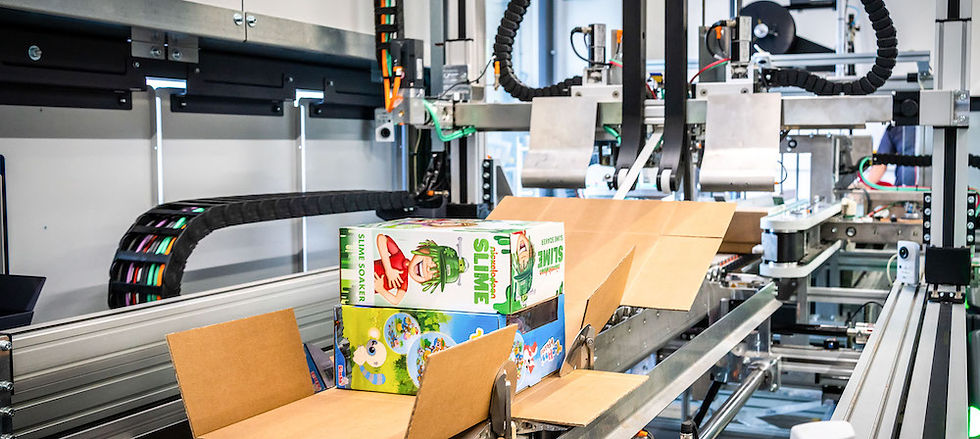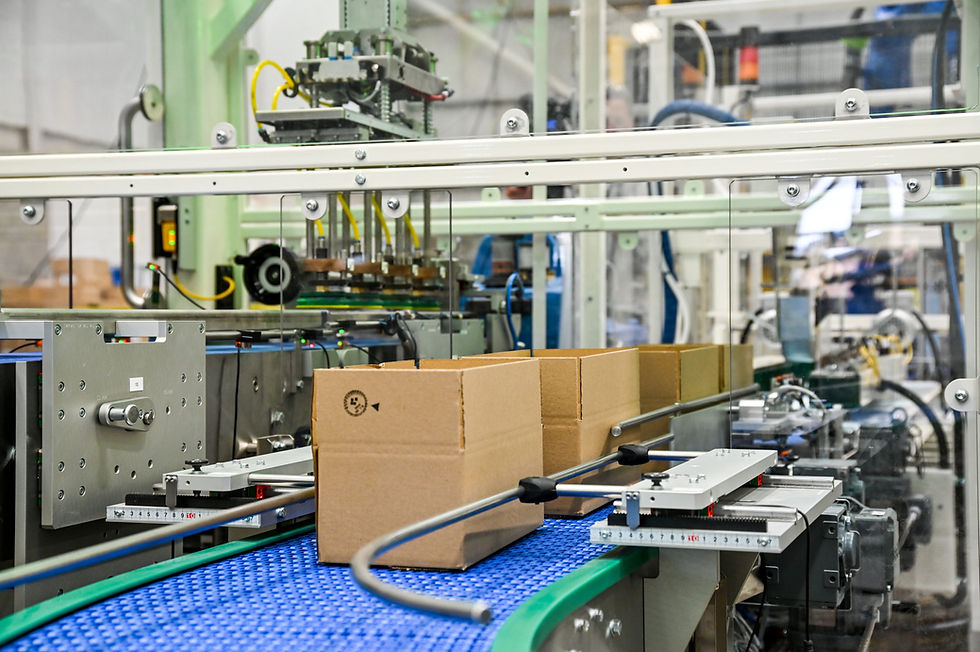Why Now Is the Right Time to Source from India: Tariffs, Trade Shifts, and Cost Advantages
- Puneet Thadani
- May 15
- 4 min read
Updated: May 18

Introduction
In today’s changing trade environment, procurement decisions are no longer just about cost. They’re about stability, risk mitigation, and long-term strategy.
With growing uncertainty around Chinese imports — driven by tariffs, geopolitical tensions, and supply chain disruptions — many North American companies are actively exploring new sourcing hubs. Among the most promising alternatives is India.
India has quietly built a robust manufacturing ecosystem over the past two decades. And now, in 2025, it’s positioned to become a go-to sourcing destination for businesses across packaging, raw materials, components, textiles, and more.
This blog explores why the timing is right to start sourcing from India — and how businesses can approach the shift with clarity and confidence.

1. Trade Tensions Are Reshaping Global Procurement
Ongoing U.S.-China trade tensions have resulted in several waves of tariffs since 2018. While some exemptions were in place for a few years, 2024 brought a fresh round of restrictions and enforcement, particularly for electronics, machinery, and plastic goods.
Canada has also issued scrutiny on certain Chinese imports due to cybersecurity and geopolitical concerns.
The result? Importers are now paying significantly higher duties on certain China-origin products — squeezing margins and increasing total landed costs.
According to Reuters, some North American importers are seeing cost hikes of 10–25% on affected categories, with no certainty on when trade relations will normalize.

2. India Offers a Competitive Cost Advantage
Compared to many Southeast Asian and Latin American markets, India remains highly competitive on manufacturing costs — particularly in categories like:
Packaging materials (e.g., kraft paper, corrugated boxes, laminates)
Industrial components (e.g., molded rubber/plastic parts, gears)
Textile and natural fibers (e.g., cotton, jute, coir)
Personal care and wellness products
Stone, metalware, and home décor
Labor costs in India are 30–50% lower than in China, and energy subsidies in some states further reduce production expenses.

3. India’s Export Ecosystem Has Matured
India has historically been seen as a strong producer for domestic consumption. But in the last decade, the country has intentionally built infrastructure, policies, and capabilities for export-readiness.
This includes:
The Make in India initiative promoting manufacturing investments
Modernization of port logistics and customs systems
Government support for eco-friendly and sustainable production
Increased adoption of quality certifications and export standards
This means North American buyers now have access to suppliers that are:
English-speaking
Digitally responsive
Aligned with international compliance requirements
According to IBEF, India’s merchandise exports are expected to reach $1 trillion by 2030, with packaging, engineering goods, and textiles among the fastest-growing sectors.
4. India Reduces Over-Reliance on a Single Market - supply chain diversification
Smart procurement leaders are building resilience into their supply chains. That means spreading risk and avoiding dependence on any single country — especially when that country is affected by unpredictable regulations or political tensions.
India complements — not replaces — other sourcing hubs. For many businesses, this means:
Sourcing packaging or textiles from India
Maintaining electronics supply from China
Exploring machinery or engineering components from Vietnam or Eastern Europe
India provides geographic diversification without sacrificing scale or cost.

5. Cultural Fit Matters — and It’s Navigable
Procurement from India works differently than from China, the U.S., or Canada.
Communication may be more relationship-based than transactional
Timelines are flexible and sometimes fluid
Pricing is often negotiable and context-dependent
Supplier follow-up requires persistence and rapport
At Honest Procurement, our team understands these dynamics — because we’ve worked with Indian manufacturers for years. We’ve also done business in North America, which means we speak the language of both sides.
This allows us to function as a bridge — ensuring that expectations are clearly set, negotiations are handled respectfully, and updates flow transparently.
6. India Excels in High-Growth Product Categories
India has become particularly strong in key categories that matter for growing North American businesses:
📦 Packaging
Eco-friendly materials (kraft, jute, compostable films)
Custom-printed laminates and flexible pouches
Glass jars, PET containers, HDPE bottles
🧵 Textiles & Soft Goods
Organic cotton, bamboo fabric, home furnishings
Technical fabrics (fire-retardant, waterproof)
Bags, yoga mats, uniforms
⚙️ Industrial & Precision Parts
CNC machining, gears, plastic-molded parts
Bearings, castings, components for assembly
Small-scale manufacturing equipment
🛍️ Private Label Consumer Goods
Ayurvedic and herbal wellness products
Cosmetics and personal care
Handicrafts and home décor
If your business falls into any of these categories, India likely offers cost savings, product customization, and supplier flexibility — when managed well.

7. Getting Started: The Right Way to Explore India
If you’re new to India sourcing, here’s what works best:
✅ Start With Discovery
Before placing an order, spend time understanding:
Product feasibility
Estimated pricing benchmarks
MOQ expectations
Lead times and documentation needs
✅ Vet Suppliers
Look beyond basic directories. Vetting involves:
Reviewing previous export orders
Assessing certifications
Checking packaging quality
Understanding manufacturing capacity
✅ Clarify Terms Early
Avoid delays and misunderstandings by aligning on:
Payment terms
Packaging and labeling requirements
Sample timelines
Post-production quality checks
✅ Work With a Local Partner
Having a partner on the ground — one that understands Indian supplier culture but also aligns with North American business expectations — can mean the difference between a smooth experience and a costly one.
That’s where Honest Procurement comes in.

How Honest Procurement Helps
Honest Procurement supports businesses across the U.S. and Canada who want to source from India without the learning curve. The team offers:
Supplier discovery and shortlisting
Quote comparisons and price benchmarking
Negotiation support and communication follow-up
Sample coordination and basic QC
Procurement consulting based on your industry
With deep experience in India and North America, the Honest Procurement team helps businesses avoid delays, misunderstandings, and unnecessary costs.
Learn more about our services at www.honestprocurement.com
Final Word: 2025 Is the Year to Diversify
With global trade in flux and sourcing strategies evolving, now is the time to explore India — not just as a backup, but as a strategic sourcing hub.
India offers cost-effective, export-ready manufacturing across key categories — and with the right approach, North American businesses can build lasting, profitable relationships.
To learn more or discuss your product needs, connect with us at https://www.honestprocurement.com/contact . We’re here to make sourcing simpler, smarter, and more transparent.




Comments